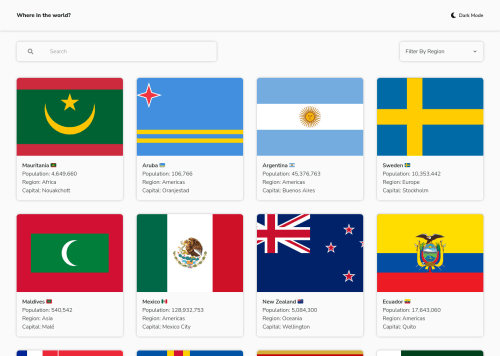REST Countries API

Solution retrospective
Hi everyone, I'm so happy to share my solution for this challenge.
In this project I used ReactJs for building User Interface , TailwindCss for styling and Google Map Api for displaying Map for each country.
Although using TailwindCss to style is super fast but I find the code hard to read.
I used Google Map Api for the first time to add an additional map for each country. I think I can do some fun stuff with it. ( I deleted this feature due to the fact that it costs a lot of money)
I transform border countries to have more interesting look.
I want to make this project become one of my main portfolio projects. Can you guys suggest any functionalities to this project? I really appreciate that.
If you find any bugs or any suggestions, please let me know. Thank you for your valuable time and happy coding!
Please log in to post a comment
Log in with GitHubCommunity feedback
- @NizarMjr
Good job #Chris I liked what you have done There is necessary thing you need to add to improve more you project : -Acces and get the details of country from the borders with this point you could make your project more wide and more accessible
Good luck and Happy Coding
Marked as helpful - @satrop
Really impressed with the outcome you have here!
I especially love the use of React! I am JUST getting into React and love the idea of compartmentalizing all the things.
The only thing I would add is like the accessibility report says, I would get an H1 on the page, you could hide it with a utility class, but it's worth backing in as many ADA items as you can from the start.
Really clean code. Noice work my friend!
Marked as helpful
Join our Discord community
Join thousands of Frontend Mentor community members taking the challenges, sharing resources, helping each other, and chatting about all things front-end!
Join our Discord